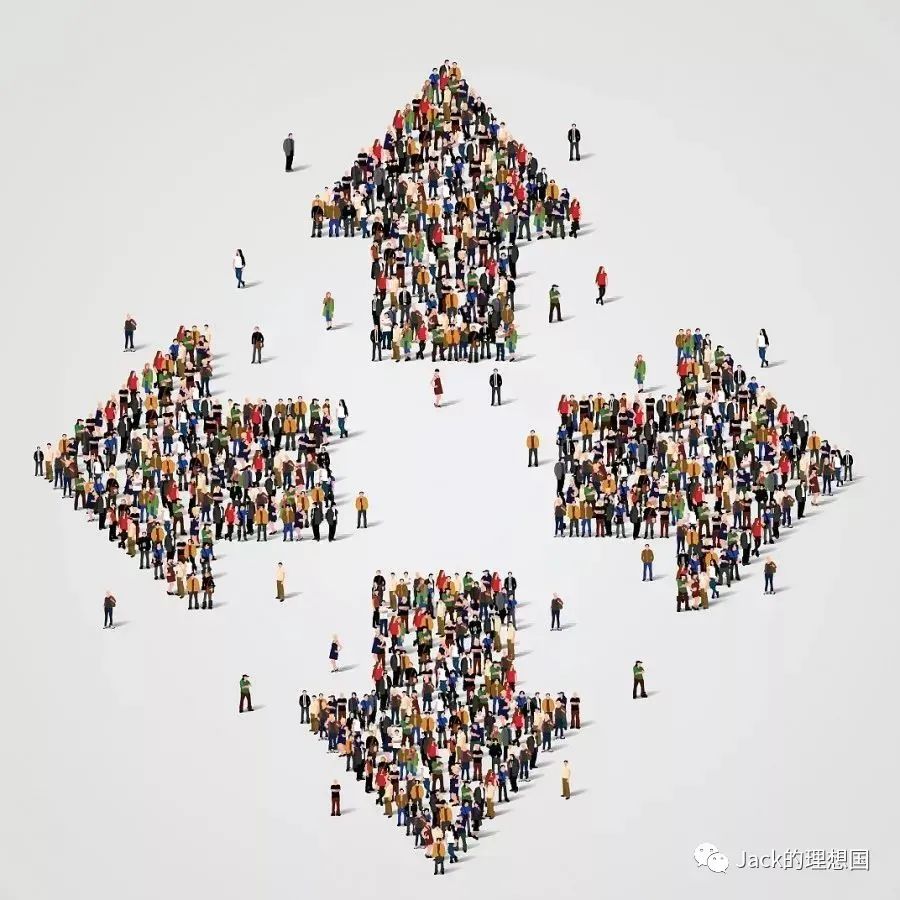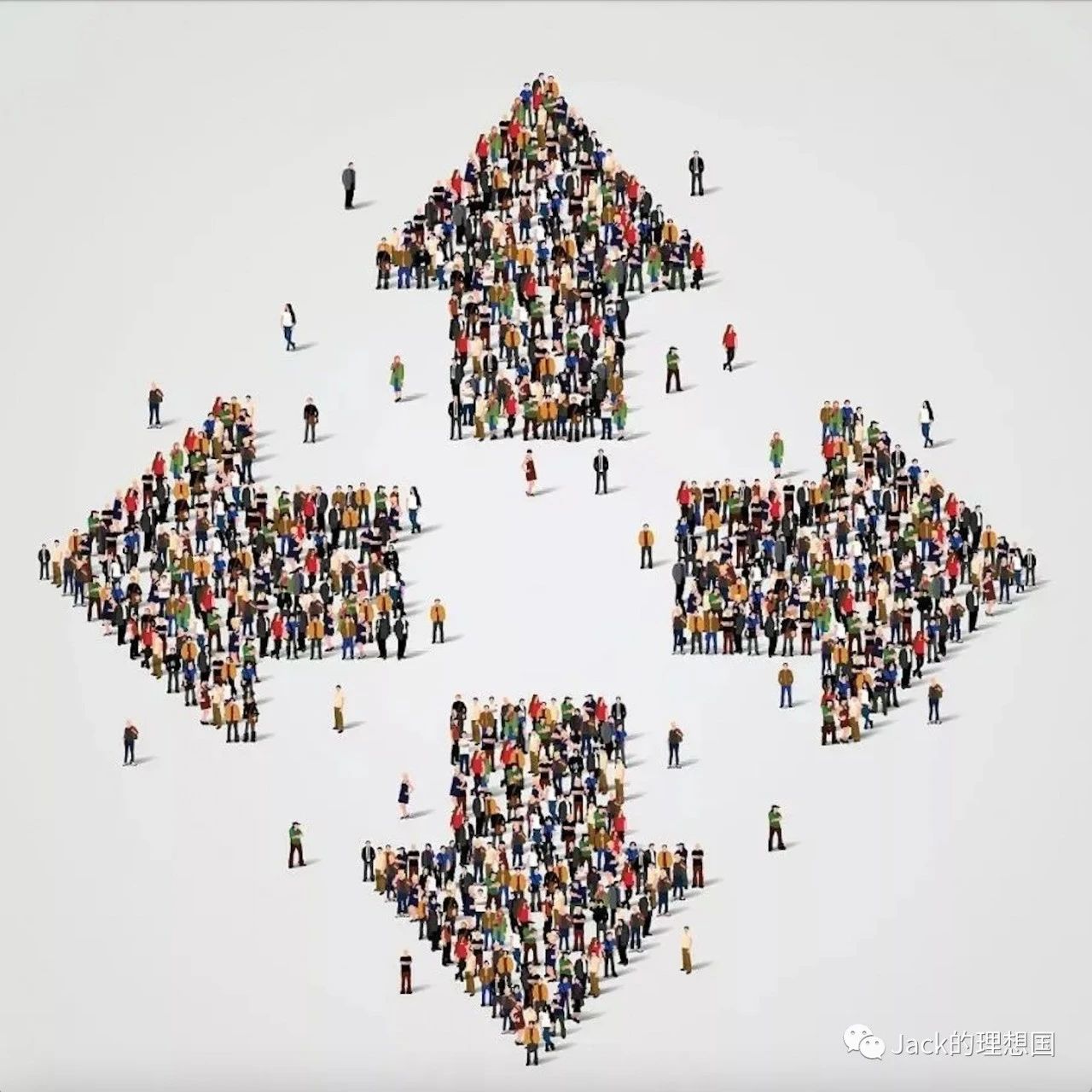LBEW 36 - On Solving Cultural Conflicts 东西方的连接36 - 论文化冲突的解决

In the essay “Strange Loops 3”, I broke down the tendency of human nature to swing between a facet that embraces diversity and one that seeks unity. Cultural conflicts emerge when the fact that seeks absolute unity takes over. Under a modern context, though, with the advent of the internet among a plethora of distance-shrinking technologies, the notion that diversity is incongruous with unity may be put under doubt. Can humankind rise above historical patterns of conflict and develop an order where both unity and diversity are promoted?
A closer examination of the modern world, especially the issues plaguing the current international order, is necessary to begin thinking about the question posed above. Today is an age where people desire absolute unity excessively and perilously. Absolute unity can be defined as a situation where the majority, if not all, believes in the same values or practices. States often try to achieve absolute unity through the tools of warfare and cultural oppression, to either demolish the values of another state or coerce it to succumb. This desire for cultural absolute unity is spreading widely. For example, the global rise of an extreme group of netizens known as “The Little Pinks” is a worrying trend. “The Little Pinks” refers to netizens who display an unforgiving nationalist stance on issues. Like a mob, they hunt down those who oppose their views, seeking to create a unified nationalist force across the internet. This group poses a severe hazard for countries to develop mutual understanding and appreciation of diversity, as the nature of nationalism implies a belief in the superiority of one’s nation. If nationalism becomes widespread and commonly accepted, then one can only expect conflicts to intensify.
A root of this desire for absolute unity, often fueled by nationalism, is a fundamental distrust between countries and cultures. This distrust can mainly be seen on the governmental level, but it has permeated through the populace in the current world. During the initial months of COVID, this distrust between different sides was highlighted in a most apparent and worrying way, as conspiracy theories and finger pointing abounded. This distrust also manifests itself in increasingly acrimonious and distorted attacks on cultural values. Another root of today’s growing cultural conflicts is a general ignorance about each other’s cultures and a lack of will to learn or understand. Many are blinded by nationalism, gradually losing curiosity and reason. Others are simply not exposed to another culture, hence are improbable to develop any genuine drive to learn. In a nutshell, today’s cultural conflict is defined by a worsening mutual distrust and ignorance towards each other’s culture.
To resolve cultural conflicts and maintain the congruity between unity and diversity, this essay proposes the following solution: Governments must seek international unity on the macro perspective but encourage the populace to seek diversity on the micro perspective.
Begin with the first part of the solution proposed: Countries must seek unity on the macro perspective. This argument means that on the governmental level, leaders and the ruling powers of each state, in their interactions, must devote their efforts to find a unifying force that can create powerful bonds in between. Politically, this unifying force can be in the form of a federation or large-scale governmental cooperation plans; Economically, this unifying force can be in the form of global economic partnerships and international policies that aim to facilitate trade; Culturally, this unifying force can be in the form of cultural unions that emphasize the common aspects of culture or the formation of a global cultural value, such as the recognition of freedom. On the macro perspective, this collective effort to seek unity is needed as diversity, if hailed to an extreme, can be equally dangerous as if countries hail absolute unity. Unrestrained diversity would make cultural conflicts become a normality. For instance, from the close of the Persian Wars (449 BCE) through the ascendancy of Alexander the Great (336 BCE), conflict was a near incessant occurrence in ancient Greece, the 27-year Peloponnesian War being just one example. Within the current Greek borders, a complex system of city-states developed from around 800 BCE. Different city-states had varying religions and political or cultural beliefs, constituting a flourishing diversity during this period. Unfortunately, it was exactly due to this overly diverse and “decentralized” status that wars over religion, ideologies and cultural values became a necessity.
From the example of ancient Greece, one may understand that the call for absolute diversity on the macro perspective between states can jeopardize peace-maintaining efforts. If states collaborate to form a greater unified body, however, the maintaining of peace between cultures may be more readily achieved, as reaching a consensus should be easier. This greater unified body must be restrained effectively, though. When governments work to form unity internationally, if uncontrolled, they might abuse their powers to subjugate any remaining force of diversity and lead to a state of an undesired absolute unity. Hence, a restraining force comprised of the common people on the micro level, the second part of the solution, is required. Unlike the government, the populace should be encouraged to seek intercultural diversity. Citizens should organize events to learn about global cultures and to allow people from everywhere to talk directly. But the action of the citizens should not be extended into persuading the government to completely hail diversity, as then the world would sink into chaos like for the ancient Greeks.
When piecing the macro and micro perspectives together, an automatic worldwide system can be activated to block cultural conflicts and yet ensure the flourishing of culture. On the one side, the will to seek diversity (micro) for the common people would put a drag on governments’ efforts to use the instruments of war to reach absolute unity by subjugating diversity on all levels; On the other side, the will to seek some greater unity for the governments (macro) would put a leash on efforts to achieve absolute diversity for the populace. Human nature natural fluctuates between a facet that wishes for unity and one for diversity. By implementing this solution, this fluctuation can be stopped, and it would be possible for unity and diversity to coexist, albeit on different levels.
The actions undertaken to implement this solution can be mainly divided into two points. First, governments and citizens should learn to utilize history versatilely. For governments, they should aim to form unified bodies such as political or economic unions and organizations developed around a globally-recognized cultural value. To forge the bonds that connect the sections of a unified body, history may be used. For example, two states can refer to their friendly interactions during a certain historical period or a time when both states shared a common cultural value. Doing so may encourage the establishment of deeply-intertwined bonds, as every individual and country can be affected by history. History can also be employed as a tool to seek intercultural diversity for citizens. While history can contain moments when civilizations merged and became more unified, it simultaneously displays periods when diversity flourished. Citizens internationally should use these periods of flourishing diversity to advocate for the maintaining and developing of a variety of different beliefs, ideologies, and values on the micro level. History can thus be utilized by both governments seeking for unity and common people seeking for diversity in versatile ways.
However, history is not necessarily the most effective tool all the time. It is limited as not everyone can have an equally strong connection to historical information. Plus, history sometimes can be deceptive. To try to imitate the actions of great people and states in history exactly is often an unwise decision, as the contexts would have changed, meaning that the same actions might lead to drastically different outcomes. To bypass the limitations of history as a tool, governments on the macro level and civilians on the micro level should both accomplish their respective goals through the fundamental creations of humankind. These creations include music, philosophy, literature, and so much more. They are universal in the sense that every culture, regardless of their history, can link and resonate with them powerfully.
For the government, when seeking unity with other states, to prevent conflict during the process, leaders can build bridges with these creations. For instance, forums between nations can be hosted that discuss the commonalities found in their respective genres of music, systems of philosophy, and works of literature. Admittedly, music, philosophy, and literature may deliver a quite limited impact on politics, as the arts (including humanities) and politics are often viewed as a dichotomy. But during the Renaissance, Italy and Spain were firmly connected as they frequently exchanged ideas about art and philosophy. China and India were also inextricably linked during history by appealing to similar religions and philosophical and artistic traditions. The power of the fundamental creations of humankind can be immense.
For the people, when seeking diversity on the basic level, they can resort to the creations belonging to the arts and humanities as well. For instance, two groups of teenagers from different cultures can champion diversity by comparing the differing schools of philosophical thought in their respective cultures. By acknowledging and appreciating these differences, the concept of diversity is passingly highlighted.
Overall, cultural conflicts are still a significant issue for the world today partially because nations distrust and are ignorant about others, fueling them to pursue absolute unity in violent ways. To resolve this distrust and ignorance, putting an end to cultural conflicts, this essay proposes a twofold solution where governments, on the macro level, seek a greater unity while the public, on the micro level, seeks a widespread diversity. This solution introduces a checks-and-balance system where the dangerous desires for absolute unity and diversity can be restrained. It also reveals possibilities for nations to candidly communicate through the tools of history and the fundamental creations of humankind. This solution has no complete guarantee of success. However, pieces of historical evidence and an examination into human nature reveal that it is feasible, and if implemented well, can deliver profound repercussions on international relations.
在《怪圈3》一文中,我分解了人性在拥抱多样性和寻求统一的两面之间摇摆的自然行为。当寻求绝对统一占据上风时,文化冲突就会出现。不过,在现代背景下,随着互联网和大量跨时空技术的出现,多样性与统一性之间的不兼容性可能不再存在。人类能否超越历史上的冲突规律,发展出一种同时促进统一和多样性的秩序?
要开始思考上面提出的问题,有必要对现代世界进行仔细研究,特别是困扰当前国际秩序的问题。今天是一个人们过分地、危险地渴望绝对统一的时代。绝对统一可以被定义为绝大多数人(如果不是所有人)都相信相同的价值观或做法的状况。国家往往试图通过战争和文化压迫的工具来实现绝对统一,即要么拆毁另一个国家的价值观,要么胁迫它屈服。这种对文化绝对统一的渴望正在广泛传播。例如,一些极端的网民群体在全球范围内的崛起就是一个令人担忧的趋势。这些网民群体在一些问题上表现出不依不饶的mz主义立场。如暴徒一样,他们追捕那些反对他们观点的人,试图在全网范围内建立一个统一的mz主义力量。这些群体对各国发展相互理解和欣赏多样性构成了严重的危害,因为mz主义的本质意味着相信自己国家的优越性。如果mz主义变得广泛和普遍接受,那么人们只能等待冲突加剧。
这种往往由mz主义助长的对绝对统一的渴望,其根源是国家和文化之间的根本不信任。这种不信任主要体现在政府层面,但它已经渗透到当今世界的民众中。在新冠疫情最初的几个月里,这种不同方面的不信任以一种最明显和令人担忧的方式凸显出来,阴谋论和指责比比皆是。这种不信任还表现在对文化价值越来越尖锐和扭曲的攻击上。当今日益严重的文化冲突的另一个根源是对彼此文化的普遍无知和缺乏学习或理解的意愿。许多人被mz主义蒙蔽,逐渐失去了好奇心和理性。还有一些人根本没有接触过另一种文化,因此不可能形成任何真正的学习动力。简而言之,今天的文化冲突是由日益恶化的相互不信任和对彼此文化的无知所决定的。
为了解决文化冲突,保持统一性和多样性之间的兼容性,本文提出以下解决方案: 政府必须在宏观层次上寻求国际统一,但鼓励民众在微观层次上寻求多样性。
从提出的解决方案的第一部分开始: 各国必须在宏观上寻求统一。这一论点意味着,在政府层面上,每个国家的领导人和统治者,在他们的互动中,必须致力于寻找一种统一的力量,在国家间建立强大的联系。在政治上,这种统一力量可以采取联邦或大规模政府合作计划的形式;在经济上,这种统一力量可以采取全球经济伙伴关系和旨在促进贸易的国际政策的形式;在文化上,这种统一力量可以采取强调文化共同点的文化联盟的形式,或形成一种全球文化价值观,如对自由的认可。从宏观上看,这种寻求统一的集体努力是必要的,因为多样性如果被推崇到极致,就会像各国呼唤绝对统一一般危险。无节制的多样性会使文化冲突成为一种常态。例如,从波斯战争结束(公元前449年)到亚历山大大帝登基(公元前336年),冲突在古希腊几乎是不断发生的,长达27年的伯罗奔尼撒战争只是一个例子。在希腊境内,从公元前800年左右开始形成了一个复杂的城邦体系。不同的城邦有不同的宗教和政治或文化信仰,在这一时期构成了繁荣的多样性。不幸的是,正是由于这种过于多样化和 "分散 "的状态,关于宗教、意识形态和文化价值的战争成为一种必然。
从古希腊的例子中,人们可以理解,要求国家之间在宏观上追求多样性会危及维护和平的努力。然而,如果各国合作形成一个更大的统一体,那么维护不同文化之间的和平可能更容易实现,因为达成共识应该更容易。不过,这个更大的统一机构必须受到有效的约束。当政府努力在国际上形成统一时,如果不加以控制,他们可能会滥用权力,征服所有剩余的多样性力量,并导致一个危险的绝对统一的状态的诞生。因此,世界需要在微观层面上建立一支由普通人组成的约束力量,即解决方案的第二部分。与政府不同,民众该被鼓励去寻求跨文化的多样性。公民应该组织活动,了解全球文化,让来自各地的人直接对话。但公民的行动不应扩展到说服政府完全呼唤多样性,因为那样的话,世界就会像古希腊人那样陷入混乱。
当把宏观和微观的观点拼凑在一起时,一个自动的世界性系统可以被激活,以阻止文化冲突,同时又保证文化的繁荣。一方面,普通人寻求多样性的行动(微观)会限制政府使用战争工具,通过征服各个层面的多样性来达到绝对的统一;另一方面,政府寻求某种更大的统一的意愿(宏观)会限制民众试图实现任何绝对多样性的努力。人类的天性是在希望统一的一面和希望多样性的一面之间自然波动的。通过实施这一解决方案,这种波动可以被阻止,统一性和多样性将有可能共存,尽管是在不同的层次。
为实施这一解决方案所采取的行动主要可分为两点。首先,政府和公民应该学会灵活地利用历史。对于政府来说,他们应该致力于形成统一的机构,如政治或经济联盟和围绕全球公认的文化价值发展的组织。为了建立连接统一机构各部分的纽带,历史可以被利用。例如,两个国家可以提及它们在某一历史时期的友好交往,或两个国家共享共同文化价值的历史时期,这样做可能会鼓励建立深层次的联系,因为每个人和国家都无法避免地受到历史的影响。历史也可以作为一种工具,为公民寻求文化间的多样性服务。虽然历史可能包含文明融合和更加统一的时刻,但它同时也包含了富有多样性的时期。国际上的公民应该利用这些多样性蓬勃发展的时期作为证据来倡导在微观层面上保持和发展各种不同的信仰、意识形态和价值观。因此,寻求统一的政府和寻求多样性的普通人都可以通过各种方式来利用历史。
然而,历史不一定是所有时候都最有效的工具。它是有限的,因为不是每个人都能与历史信息有同样强烈的联系。另外,历史有时会具有欺骗性。试图完全模仿历史上伟大人物和国家的行动往往是一个不明智的决定,因为背景已经改变,意味着同样的行动可能导致截然不同的结果。为了绕过历史这个工具的局限性,宏观层面的政府和微观层面的平民都更应该通过诉诸人类的基本创造来实现各自的目标。这些创造包括音乐、哲学、文学,以及更多的东西。它们具有普遍性,因为每一种文化,无论其历史如何,都能与它们产生强有力的联系和共鸣。
对于政府来说,在寻求与其他国家的团结时,为了防止在这个过程中发生冲突,领导人可以用这些创造物建立桥梁。例如,国家之间可以举办论坛,讨论在各自的音乐流派、哲学体系和文学作品中发现的共同点。诚然,音乐、哲学和文学对政治的影响可能相当有限,因为艺术(包括人文学科)和政治经常被视为二元对立。但在文艺复兴时期,意大利和西班牙是紧密联系在一起的,因为他们经常交流艺术和哲学方面的想法。中国和印度在历史上也因为诉诸类似的宗教和哲学及艺术传统而有着千丝万缕的联系。人类的基本创造物的力量可以是巨大的。
对于普通人民来说,在寻求基础层面的多样性时,他们也可以求助于属于艺术和人文的创作。例如,两组来自不同文化的青少年可以通过比较各自文化中不同的哲学思想流派来倡导多样性。通过承认和欣赏这些差异,多样性的概念被强调。
总的来说,文化冲突仍然是当今世界的一个重要问题,部分原因是国家之间的不信任和对其他国家的无知,促使他们以暴力的方式追求绝对的统一。为了解决这种不信任和无知,结束文化冲突,本文提出了一个双重的解决方案,政府,在宏观层面上,寻求更大的统一,而公众,在微观层面上,寻求广泛的多样性。这种解决方案引入了一种制衡制度,在这种制度下,追求绝对统一和多样性的危险愿望可以得到抑制。它还揭示了各国通过历史工具和人类基本创造物进行坦率交流的可能性。此解决方案不能完全保证成功。然而,一些历史证据和对人性的研究表明,此方案是可行的,且如果实施得当,可以对国际关系产生深远的积极影响。
- 本文标签: 原创
- 本文链接: http://www.jack-utopia.cn//article/606
- 版权声明: 本文由Jack原创发布,转载请遵循《署名-非商业性使用-相同方式共享 4.0 国际 (CC BY-NC-SA 4.0)》许可协议授权










